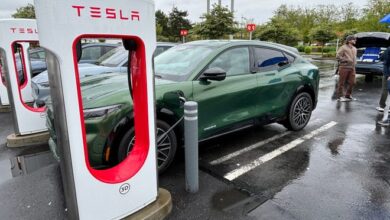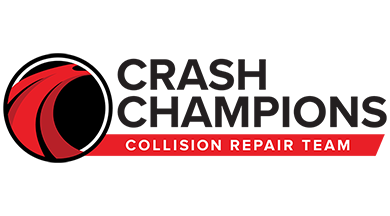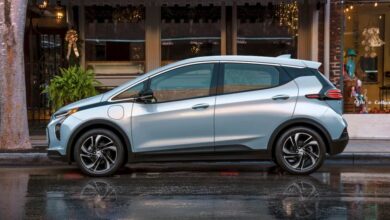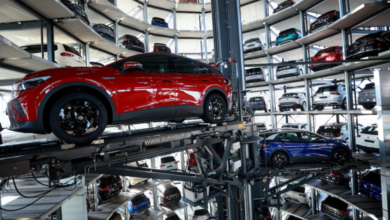How do Seattle’s new curbside EV chargers work?
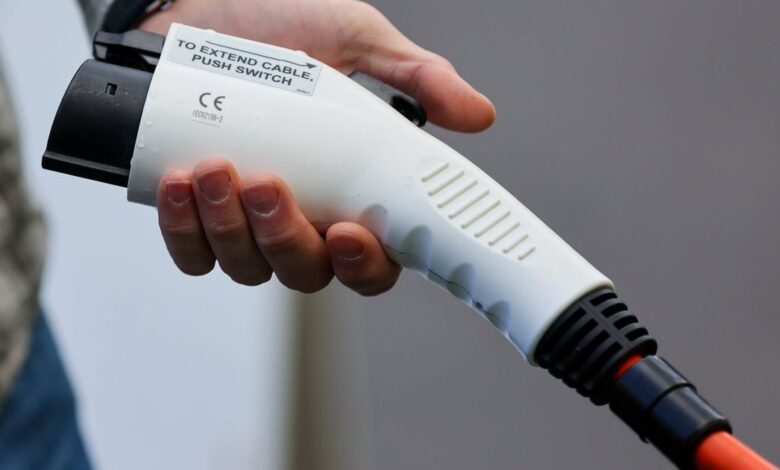
Seattle City Light’s new electric vehicle charging program has finally hit the streets, and its popularity has exceeded expectations, the utility said.
Over the past year, City Light has slowly rolled out 25 curbside Level 2 EV charging stations, with the capacity to charge 58 cars at a time. The chargers are intended to expand options for drivers who live in homes without access to a charger, like those lacking a driveway, garage or parking lot.
The chargers can juice up an EV with 30 miles of range per hour — and they’ve seen consistent overnight use, and in some locations, heavy daytime use, said City Light’s senior capital projects coordinator Jacob Orenberg.
The most popular locations include the stations on Capitol Hill, Stone Way in Wallingford, and in Fremont, Orenberg said.
For the uninitiated: How do these chargers work? We visited a charger in West Seattle to get a demo and tackle some of the big questions here.
How long can you charge at one of the stations?
How long will depend on the location and the time of day, but the spots are only available for EVs that are actively charging.
At a charging station on California Avenue Southwest in West Seattle, EVs can park for a maximum of four hours between 7 a.m. and 6 p.m. — and overnight parking is allowed. That means someone could park and charge starting at 2 p.m. and not move until 11 a.m., Orenberg said.
“The idea here is we want at least one turnover per day for the charging station. We don’t want people parking their car here for days on end,” he said.
Those hours differ across neighborhoods, he said, or in denser areas like Capitol Hill, where the maximum daytime parking time might be two hours. In two locations — the Chinatown International District and South Lake Union — users will have to pay for both parking and charging, Orenberg said.
A gas-powered car or an EV that is not actively charging could be ticketed around $164 if in the spot, he said.
How do you pay?
The vast majority of users pay through the Shell Recharge app, Orenberg said. Users can identify the charger they want through the app either by scanning the QR code on the charger, entering the charger’s station ID or by selecting from a map, he said.
Drivers can also pay with a credit card without the app by calling the number listed on the charger or by tapping a Shell Recharge card on the reader.
The charging cable reaches up to 21 feet. When unplugged, the charger will automatically retract the cable.
Charging costs 21 cents per kilowatt-hour, which means the typical Seattle commuter, who drives 175 miles a week, should be able to charge their EV for around $18 a week, Orenberg said.
The chargers are about six times faster than charging with a standard 120 volt wall outlet, but around one-fifth the speed of some faster chargers in the city, he said.
Is the charger compatible with all electric vehicles?
The chargers work with any EV on the market, Orenberg said. Teslas or any vehicle made with the “North American Charging Standard” head will need an adapter, which is often included with the EV.
Why were the stations so delayed?
Seattle City Light said last year 31 stations would be completed by the end of last summer. But it has been slow going. Some opened last summer, and 25 are open now, with the other six scheduled to open by the end of this summer.
Orenberg said installing the stations “ended up being a little more difficult than we expected.” In some cases, there were unforeseen underground facilities or electrical lines that required changes to the design and permitting, he said.
Some cities like Los Angeles have an established curbside EV charging program that are mounted to existing light poles, he said, but City Light also designed chargers that have an additional underground or overhead wire powering the charger, which is unique, Orenberg said.
The cost of City Light’s pilot has exceeded estimates, coming in at about $2 million of ratepayer funds, he said. That pencils out to on average $64,500 per charging station.
When are more curbside chargers coming?
The program is expected to expand in 2025 and add even more chargers, Orenberg said. City Light officials are working to make the installations less expensive and quicker, he said.
“We are aware of the huge demand for these now so we are hoping to go forward with them with a much larger offering,” Orenberg said.
More details about each charging station can be found at st.news/EVchargers.
